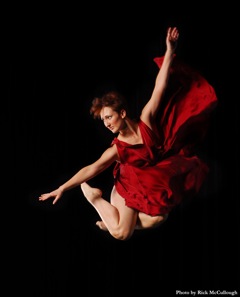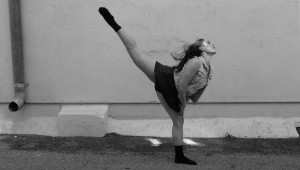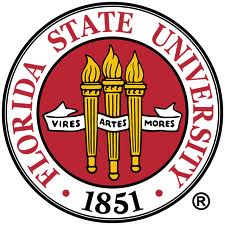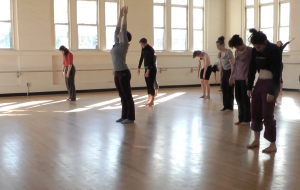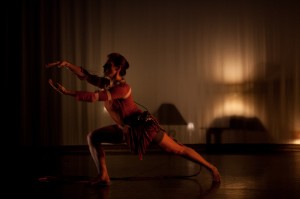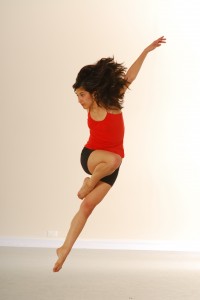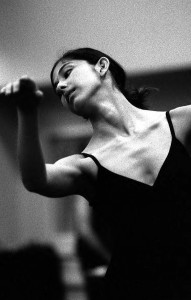
Happy chilly Houston Monday! Cozy up with some tea and read the newest installment of MFA Mondays from the incredible Diane Cahill Bedford!
Diane Cahill Bedford holds her M.F.A. in Dance Performance and Choreography from Florida State University. She is a dancer, choreographer, educator, and photographer; she currently serves as Professor of Dance at San Jacinto College South in Houston, TX. Diane has previously taught dance and presented her choreography in New York, Florida, Indiana, South Carolina, New Mexico, and Texas. www.dianecahillbedford.com
M.F. A. Life vs. Real Life
Tools of the Trade then and now…
I remember entering grad school after a four-year hiatus from academia thinking about how much I had missed that environment. Looking back, I’m not sure that I fully realized (even with four years of professional, real-life experience under my belt) what exactly I was so overjoyed about. There was of course the feeling of an immense weight being lifted off my shoulders (ironically); there was the possibility of creating dance and performing without spending so much of my time doing that other pesky thing called earning money at odd-end jobs like waiting tables. But now, two and half years into my first full-time Professorship, I know exactly what I was so elated about.
I had the fortunate experience of attending grad school where a plethora of tools and experiences were available to me: endless talented dancers to choose from, ample studio space to rehearse in, state-of-the-art technology, and a conditioning studio full of equipment to whip myself into shape when the endless technique classes were just not enough to keep me in peak form. Oh, and lest I forget to mention, I also had that one “little” thing so many people have comment on as being a lifeline to their creative work – mentors and colleagues to help me grow. And even though I truly feel I utilized as much of those available resources as I could, I look back now and think about how I could have done more and appreciated it more. If only I knew then what I know now (that those tools of the trade might be the very best I’d have in a long time) maybe I would have done things a little differently.
The illusions of an M.F.A. program is that the endless tools we have at our disposal will somehow always be available to us now that we have that illustrious degree. Of course, I should have known better. I wasn’t naïve to the fact that in my own professional life before returning to grad school, I struggled to have those very tools at my disposal. But somehow, the M.F.A. program became like Disney World. It was a safe haven. A place to escape the “real-world” and delve into the art I loved full-time again. It was a place where I would earn the degree that would keep me from ever having to return to that land of struggle, that land of not so top-of-the-line tools. I was confidant that I would get a full-time job and leave that life behind me forever. I guess in the end, I really was naïve. Even though I succeeded in getting the job, that life of struggle returned waiting to greet me when I stepped into my new office.
Let me be clear when I say I am tremendously grateful and appreciative that I did succeed in finding a full-time job. My musings are more a wake-up call to myself and to those pursuing their M.F.A. degree now. A full-time teaching job does not necessarily guarantee the same level of artistic freedom constantly at one’s disposal as in grad school. I am speaking to the common graduate of course. Unless you are one of the few that land the job of your dreams right off the bat, you will be faced will a tremendous learning curve. For instance, I remember when three hours of rehearsal a week for one piece of choreography often times felt rushed. Well in the real world, even the world of academia (that gleaming, glittery place where everything is supposed to be available to you) that may be a luxury you look back upon longingly. I also remember when I could focus more on the complexities of my choreography; I took for granted that the dancers I was using could do just about anything I asked of them. For now, that luxury is also long-gone. In its place is the role of teacher where I use rehearsal time to teach the skills I want to work with in my dancers. As dance artists, our work is in part only as good as the tools we have to use; sometimes I have to let my ego go knowing that my work is not necessarily top-of-the-line. Instead, I must focus on the experiences I give my dancers as my most important accomplishment.
Do I sometimes wish I could return to grad school and be free to create work in a bubble without obstacles? Of course! Sometimes I wonder if grad school trains us to become spoiled artists who, upon re-entering the real world, have to learn how to function again. For three years, I lived in close-knit, family kind of atmosphere where the thought of scrapping for artistic tools was as foreign to me as hunting for food in today’s microwave era. Perhaps grad school needs a “survivor” course in which students are forced to create work with as few tools readily accessible to them as possible. Or, perhaps the beauty of grad school lies in the fundamental ability to take the reins of your work and run wild with as much creativity and top-of-the-line tools as possible. It is true that without experimenting with all of the possibilities in creative work, one’s art will never grow beyond their own known boundaries. Two things are for certain: looking back at the tools I had at my disposal then compared to what I have now makes me even more grateful for my grad school experience. And, finding that full-time job in academia does not necessarily solve all the struggles of the post M.F.A. dancer life.

